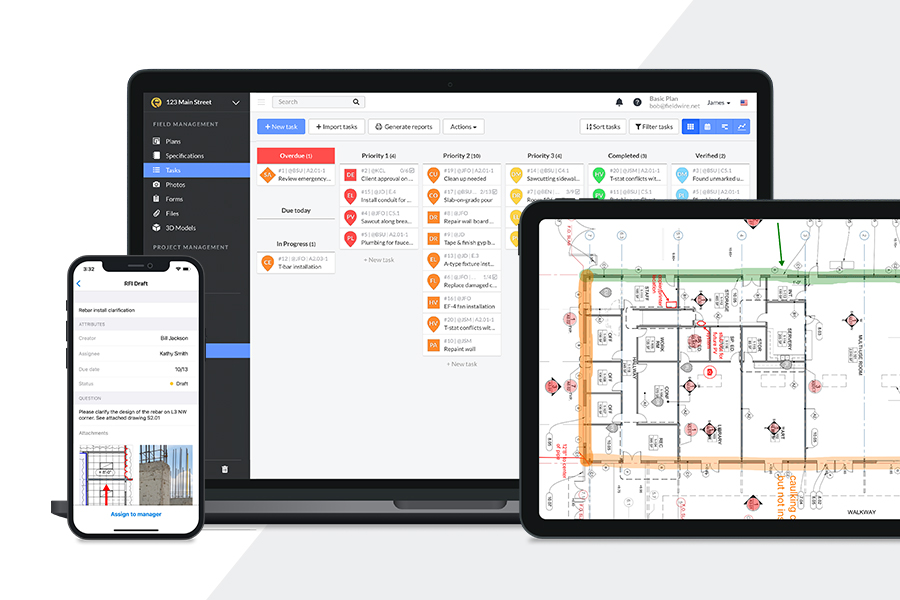Can we sustain project momentum with an aging construction workforce?

Construction managers and subcontractors are facing a challenge few other industries are encountering — most of its workforce is older and will soon leave the sector. The transition presents a juncture for companies dealing with unprecedented demand. How can your teams handle incoming projects with the same experience level while keeping quality staff in the door?
The impact of the aging construction workforce
According to the U.S. Bureau of Labor Statistics, around 22.7% of construction workers are over 55. Corporations will soon realize they need to take a proactive approach to sustaining their operations before they retire en masse.
The aging construction workforce is a single problem compounded by several other issues in the sector. A labor shortage plagues companies, with over 501,000 vacancies available. Organizations are already spending copious hours hiring and onboarding — hopefully younger — employees. While construction turnover varies from region and business, it could have a better reputation.
Pair these factors with a mountain of demand, and tenured workers have an even greater incentive to retire early. Population increases, urbanization, infrastructure investments and the housing crisis are putting pressure on construction workers, and older generations may be unwilling to shoulder the burdens this late in their careers. Construction enterprises face stiff competition, and those who do not adapt will fall behind.
The relationship between aging workers and demand
Sustaining momentum amid a retiring staff base is an opportunity to train the next generation, but it will have obstacles along the way. In what other ways does an older staff base influence construction demand?
Project delays
The aging construction force may mean you execute fewer projects and take longer to do them. Gauging pace based on experienced teams’ workflow against downtime like planned maintenance alters productivity. There could be an inadequate number of workers to complete larger projects, or the experience gaps cause younger staff to do tasks with less efficiency. These timelines are unsustainable, given how many buildings and infrastructure projects need to happen.
Knowledge transfer
The decline in workforce participation from older staff could also cause problems for younger generations. If retiring-age employees are responsible for training and passing down knowledge, there could be transfer issues in communication.
Trade work skills like electrical or plumbing may become more obscure when they are more critical than ever. Rushing to please clients and take on as much work as possible will lead to quality concerns, especially when trying to level out the skills of a multigenerational crew.
Workforce priority shifts
Retirees will also make the average age of construction workers younger, and they have vastly different priorities compared to the workforces of previous generations. They demand more empathetic working conditions that consider modern stressors.
Amid never-ending projects, construction management and stakeholders will have to balance shifts in everything from corporate values and culture to changes in benefits packages to appease young workers. Doing internal overhauls like this while juggling external clients will pose challenges.
Safety risks
Expediting schedules and taking on too much work puts construction workers at risk, especially older ones. Inexperienced staff may fail to meet compliance, while retirement-age contractors are having to interact with projects in ways they are not used to, pushing their bodies in dangerous ways.
From another perspective, the absence of older employees at your site means there are fewer extensive wells of safety knowledge. Fewer young workers will have safety mentors correcting them when they are about to cause an accident.
The solutions for sustainable development
How can your construction company circumvent the gaps caused by people who are welcoming their hard-earned retirement?
Mentoring and volunteering
The first idea is mentorship programs. Once businesses know of workers heading out the door, they can ask them to lend their experience in their final months of work by training newcomers.
These training and development sessions could be the best setup for passing down knowledge, hosting panels and encouraging questions. Additionally, they could host or support volunteer programs to drive interest in construction early in someone’s career.
Embracing digitization and automation
Building information modeling (BIM) and other digital technologies are another way to supplement a declining workforce. Whether this is remotely piloted machinery or data-gathering sensors, every attempt to streamline could save time and resources when implemented and trained correctly. Other examples include:
- Project management software: Make administrative burdens and communications easy to visualize and action.
- Mobile apps: Allow clock-ins, incident reporting, messaging and project updates at workers’ fingertips.
- Drones and robots: Boost safety compliance with remote inspections or dangerous tasks like bricklaying.
- Augmented and virtual reality: Provide hands-on training in low-stakes environments and attract younger workers with innovative training technologies.
Enhancing employee benefits
Holding momentum only happens when reducing the turnover rate in construction so people can retire without guilt. To do this, human resources departments and stakeholders should consider appealing to the younger generation’s workplace expectations and desires.
Construction enterprises will have to get creative with how they allow these to fit into their operations, but here are some of the next generations’ priorities in the workplace:
- Flexible scheduling
- Autonomy
- Higher wages
- Ethical work environments
- A sense of purpose
- Work-life balance
- Cutting edge software
Your future in aging construction
Everyone in construction will feel the brunt of older workers leaving the industry. Their wisdom and experience are why organizations have managed to handle demand to this point. Agencies mitigate this with their creativity.
Young workers will not get interested in construction if they cannot handle the projects of the modern world. There should also be enough time, space and resources to pass down the knowledge of tenured staff in a sensible way. Without a balance of these elements, construction outfits will fail, especially as new methods and materials enter the landscape in the coming years.

 Evelyn Long •
Evelyn Long • 

















